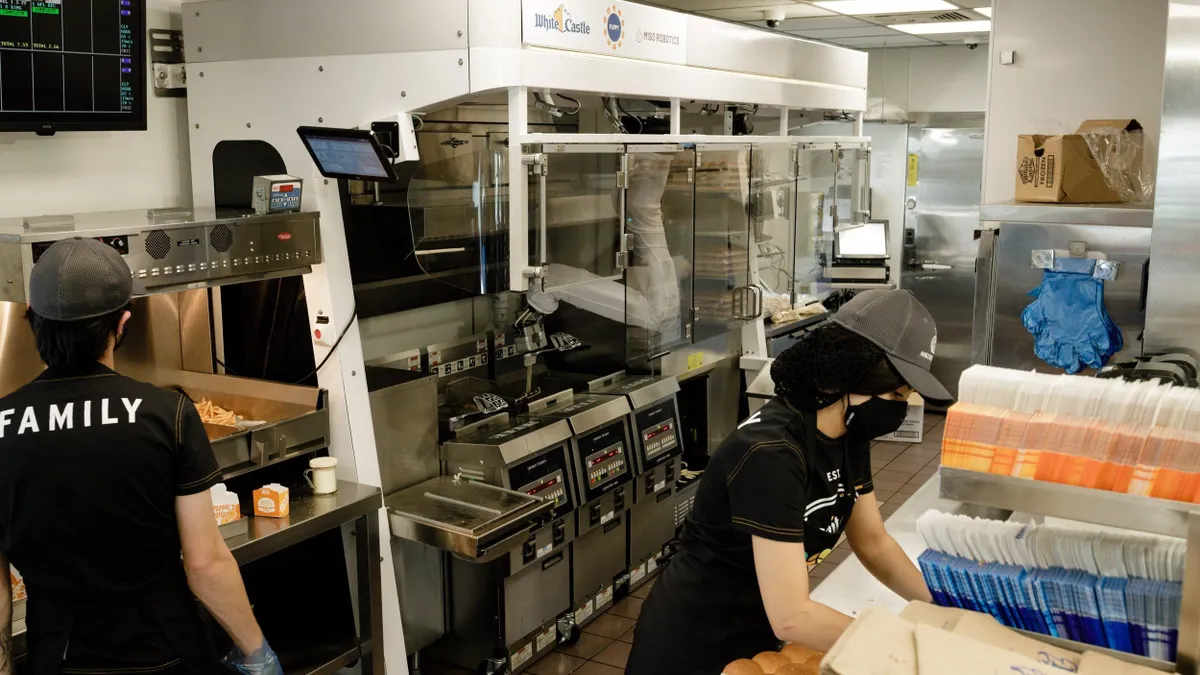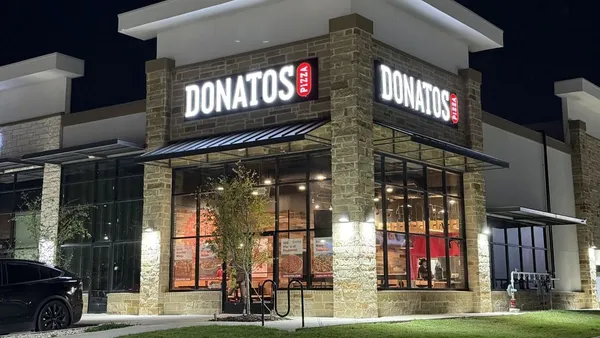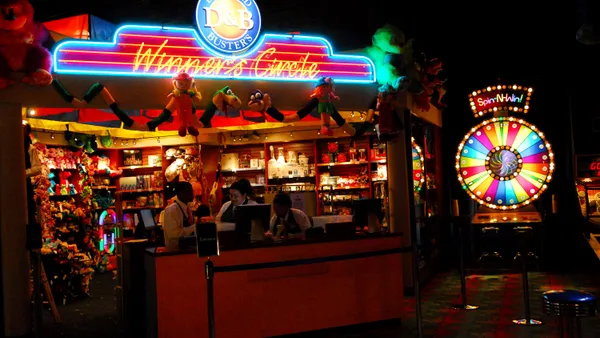Dive Brief:
- The cooking robots market will experience a compound annual growth rate of 16.09% during the 2020-2028 period, according to data from Research Nester. In 2019, the global cooking robotics market generated was worth $86.2 million and is expected to be worth $322 million by 2028.
- The fast food industry had the highest share of cooking robots at 24% in 2019 and is expected to have the highest growth rate at 17.4% CAGR during the 2020-2028 period.
- While the pandemic accelerated demand for this technology, demand was already growing pre-pandemic. Robot sales in North America increases 5.2% in Q3 2019 compared to 2018 with an increase of 4% coming from food and consumer goods, according the Robotic Industries Association. Automation companies raised $1.3 billion across 23 deals in 2019, according to PitchBook.
Dive Insight:
Though automation was starting to make headlines prior to this year, the pandemic has accelerated interest in the space. Various types of robots from that are flipping burgers, disinfecting tables or maintaining hygiene are helping industries get through the health crisis, Research Nester said in a press release.
Adoption also seems to be on an uptick. Miso Robotics, which is currently raising growth capital via SeedInvest, recently expanded its fleet of Flippy the robot to more White Castle locations. Saladworks, a make-your-own salad chain with more than 100 restaurants, has partnered with Chowbotics' robot Sally to create customizable salads from 22 sealed ingredients in a 9-square-foot refrigerated machine with a touchscreen interface. Chowbotics sales have increased over 60% since the pandemic, Chowbotics CEO Rick Wilmer told the Associated Press.
Picnic, a company specializing in food production technology and robotics-as-a-service, has seen an uptick in customer demand for its automated pizza assembly system and said it is working with several high-profile industry brands, according to a press release. On Wednesday, the company said it has improved its system with a new design and updates to make it more user friendly.
"We are seeing an increase in enthusiasm for our system and early indications are that the improvements we've made resonate with our customers. With our success and these improvements, an increasing number of kitchen operators are contacting us with interest in our system," Picnic CEO Clayton Wood said in the release.
The benefits of automating some kitchen tasks include efficiency and consistency. Flippy makes an average of 360 baskets of fried foods per day, for example. This level of efficiency could help QSRs gain a competitive edge, especially as drive-thru speed has become critical.
There’s also the safety piece, which is also necessary during the pandemic. White Castle’s Vice President Jamie Richardson told the AP that a touch-free environment that minimizes contact is increasingly important to customers.
Further, as labor costs rise and labor recruitment and retention continue to pose a challenge for restaurant operators in any environment, automation becomes even more appealing. Miso sells its Flippy for about $30,000, paid for via a monthly fee of $1,500. That fee translates to about $4 an hour on a 12-hour-a-day seven-day-a-week schedule, according to the Arizona Republic. As such Miso Robotics CEO Buck Jordan told Forbes the company is seeing interest from major brands and predicts more activity in the space in the next two years.
Consumers also seem to be more comfortable with such automation, in the kitchen and beyond. In fact, according to IEEE’s recent Generation AI 2020: Health, Wellness and Technology in a Post-COVID World global study, 89% of consumers have at least some trust in robots when it comes to cleaning and sanitizing spaces like restaurants.













